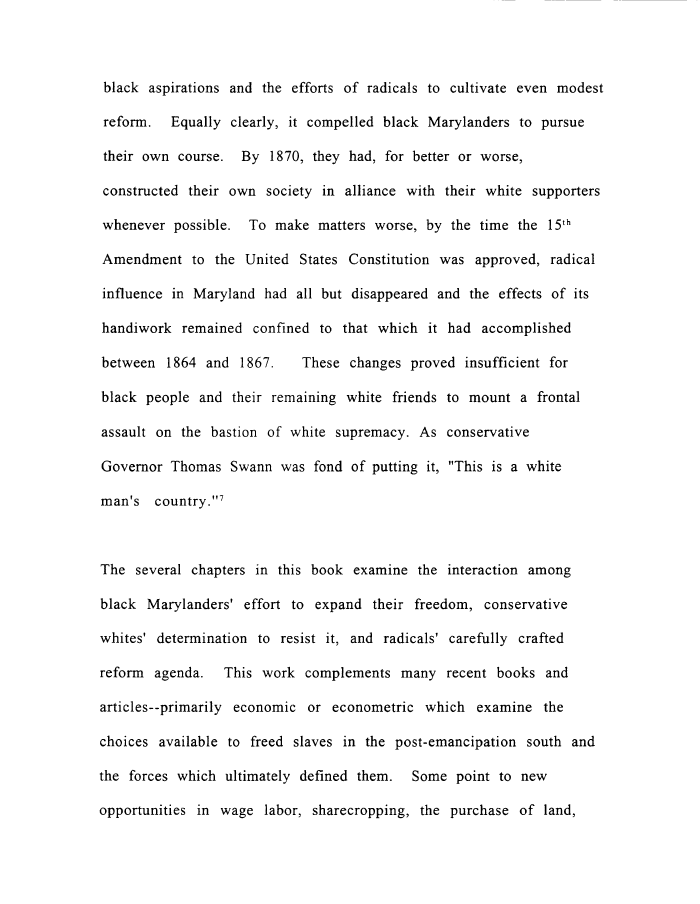 |
||||
|
TASK FORCE TO STUDY THE HISTORY AND LEGACY OF SLAVERY IN MARYLAND (Final Report) 1999/12/31 MdHR 991422 MdHR 991422, Image No: 297 Print image (41K) |
 |
||||
|
TASK FORCE TO STUDY THE HISTORY AND LEGACY OF SLAVERY IN MARYLAND (Final Report) 1999/12/31 MdHR 991422 MdHR 991422, Image No: 297 Print image (41K) |
| black aspirations and the efforts of radicals to cultivate even modest reform. Equally clearly, it compelled black Marylanders to pursue their own course. By 1870, they had, for better or worse, constructed their own society in alliance with their white supporters whenever possible. To make matters worse, by the time the 15th Amendment to the United States Constitution was approved, radical influence in Maryland had all but disappeared and the effects of its handiwork remained confined to that which it had accomplished between 1864 and 1867. These changes proved insufficient for black people and their remaining white friends to mount a frontal assault on the bastion of white supremacy. As conservative Governor Thomas Swann was fond of putting it, "This is a white man's country."7 The several chapters in this book examine the interaction among black Marylanders' effort to expand their freedom, conservative whites' determination to resist it, and radicals' carefully crafted reform agenda. This work complements many recent books and articles—primarily economic or econometric which examine the choices available to freed slaves in the post-emancipation south and the forces which ultimately defined them. Some point to new opportunities in wage labor, sharecropping, the purchase of land, |